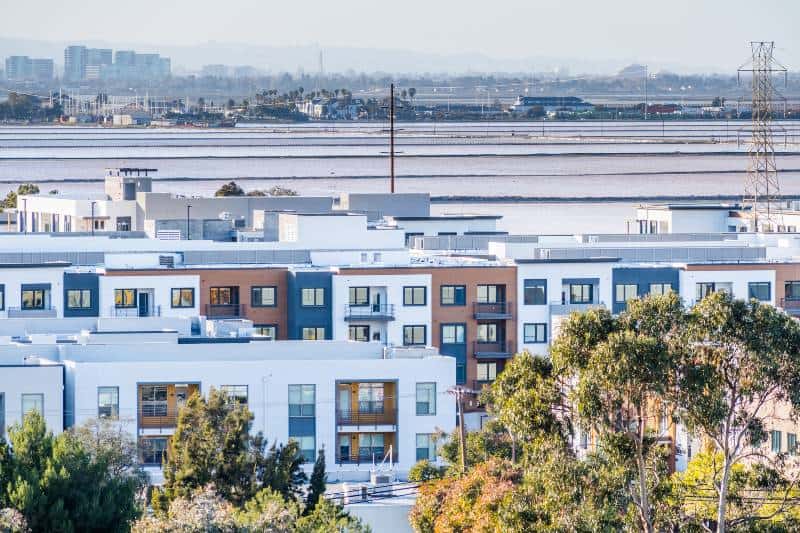If you own are a property manager, or an investor that is considering purchasing commercial real estate you might be considering a range of options such as upgrading amenities, renovating existing facilities, or expanding into new markets. While these strategies can certainly add value, it’s important to keep in mind that they may not produce lasting results if certain fundamental issues are not addressed. From increasing energy efficiency and enhancing curb appeal to offering support services and addressing tenant needs, there are several proven ways to boost the overall value of your cash flow and your commercial property.
Key Takeaways
- Increasing the value of a commercial property involves various factors including physical improvements, cost reduction, effective marketing, and leasing strategies.
- Understanding current real estate market trends and the impact of location is essential to increase the value of a commercial property.
- Compliance with relevant legal and regulatory requirements is a crucial aspect of enhancing the value of commercial properties.
Table of Contents

Why Increasing Commercial Property Value Matters
Boosting your commercial property’s value isn’t just about a higher sale price—it’s about improving cash flow, attracting better tenants, and creating a competitive edge in your market. Every dollar you add to net operating income translates directly into increased property valuation through capitalization-rate math, meaning even small improvements can deliver outsized returns.
For property owners and investors, a strategic value-add approach means you can command higher rents, reduce vacancy periods, and position the asset for refinancing or exit at a premium. Whether you’re repositioning an older office building or upgrading a retail center, understanding which improvements deliver the best ROI is the foundation of smart CRE investment.
Understanding the Value of Commercial Property
The value of a commercial property is primarily determined by a combination of physical, economic, and locational factors. At the most fundamental level, the physical attributes of the property, such as the quality of construction, age, the state of repair, and its layout, significantly impact its value.
For example, a commercial property with modern construction and a well-maintained infrastructure would typically command a higher price compared to older office buildings that may require substantial structure rehabilitation or repair.
However, the physical attributes of the property are just one part of the equation. The economic variables, such as the property’s ability to generate income, also play a crucial role in determining its value.
This is typically assessed through the net operating income (NOI), which is calculated by subtracting the property’s operating expenses from its gross income. For instance, a commercial building with a high occupancy rate and high rental income would likely have a higher value due to its stronger NOI.
Beyond the physical and economic attributes, the location of the commercial property can significantly influence its value.
The old adage, “location, location, location” holds true in the world of real estate. If a commercial property is situated in a bustling area with high foot traffic, it’s likely to attract more tenants, and in turn, generate higher rental income.
On the other hand, a similar property in a less desirable location might struggle to find tenants, leading to lower income and hence, a lower property value.
Furthermore, the value of commercial property is often influenced by the broader economic climate and market trends. For example, if the market is experiencing a downturn, property values may decrease irrespective of the individual attributes of the property.
On the flip side, during a period of economic growth, demand for commercial space can increase, leading to higher rental rates and property values.
The Concept of Return on Investment (ROI)
Return on Investment, often referred to as ROI, is a key concept in investing and is particularly relevant when assessing the value and potential profitability of commercial real estate investments. ROI is a percentage that represents the return on an investment relative to the cost of the investment.
To put it simply, ROI is calculated by taking the net profit from an investment, subtracting the cost of the investment, and then dividing the result by the cost of the investment. This is then multiplied by 100 to provide a percentage. The formula is as follows:
ROI = (Net Profit / Cost of Investment) x 100
This measure can provide a straightforward assessment of the potential profitability of different investments, allowing investors to compare and contrast various opportunities.
For example, let’s say you purchase a commercial property for $500,000. After one year, you’ve received $50,000 in rental income and the property’s value has appreciated to $525,000. The net profit from this investment would be the sum of the rental income and the capital appreciation, which is $75,000 ($50,000+$25,000). Using the ROI formula, the ROI on this investment would be 15% (($75,000 / $500,000) x 100).
It’s important to remember that ROI is just one measure of investment performance, and it doesn’t account for risk, the time value of money, or other potential costs or benefits that may not be immediately apparent. Therefore, while it can provide a useful starting point, it should be used alongside other metrics and qualitative factors when assessing an investment.
Proven Strategies to Increase Commercial Property Value
1. Improve Physical Appearance and Curb Appeal
First impressions matter. Upgrading your property’s exterior—fresh paint, modern signage, professional landscaping—creates an inviting look that attracts higher-quality tenants and justifies premium rents. Consider facade modernization, entry-area redesign, and consistent lighting to signal professionalism and care.
Budget-conscious owners can start with high-impact, low-cost changes: power-washing, seasonal plantings, and updated lobby finishes. For deeper impact, invest in architectural enhancements like storefront glass replacement or awning updates that align with current design trends.
2. Upgrade Building Infrastructure and Systems
Beyond aesthetics, ensure your core systems are modern and reliable. Upgrading HVAC, plumbing, electrical panels, and telecommunications infrastructure reduces operating costs and prevents tenant complaints. Properties with high-speed fiber, efficient climate control, and reliable utilities attract tech-forward and institutional-grade tenants.
Target systems with the worst efficiency or highest repair frequency first. For example, replacing an aging boiler with a high-efficiency model can cut energy costs by 20–30% annually while qualifying for utility rebates or tax incentives.
3. Enhance Energy Efficiency and Sustainability
Energy-efficient properties lower operating expenses and appeal to ESG-conscious tenants and investors. Install LED lighting throughout, add programmable thermostats, improve insulation, and consider rooftop solar arrays where feasible. Many jurisdictions offer grants or tax credits for green building upgrades, improving your project’s ROI.
Sustainable features also strengthen your marketing narrative. Tenants increasingly prioritize properties with lower carbon footprints, and lenders may offer better financing terms for LEED-certified or Energy Star buildings.
4. Optimize Rental Rates and Lease Structures
If market conditions support it, gradually increase rents to match or exceed comparable properties. Conduct quarterly rent surveys of similar buildings in your submarket to ensure your rates reflect current demand. Pair rate increases with added amenities—covered parking, on-site security, cleaning services—to justify higher costs and reduce tenant pushback.
Also review your lease structures. Switching from gross to net leases can shift operating cost risk to tenants, stabilizing your NOI. Be strategic: radical rent hikes can spike vacancy, so phase increases over lease renewals.
5. Attract and Retain High-Quality Tenants
Long-term, creditworthy tenants provide stable income and reduce turnover costs. Screen prospective tenants carefully, offer competitive lease terms, and maintain responsive property management. A single anchor tenant with a strong brand can elevate your entire property’s reputation and attract complementary businesses.
Retention strategies matter as much as acquisition. Proactive maintenance, tenant engagement events, and flexible lease renewals keep quality occupants in place, protecting your cash flow and minimizing downtime between leases.
Legal Considerations in Enhancing Commercial Property Value
Understanding legal requirements is essential when enhancing commercial property value. Focus on zoning laws and building codes to ensure compliance and protect your investment.
Zoning Laws and Changes
Zoning laws regulate property use within specific geographic zones and can limit improvements to your commercial property. For example, zoning ordinances might restrict a retail property from converting space into residential units.
Consult local zoning ordinances before making significant changes. In some cases, you can apply for rezoning or a variance to modify use restrictions, though approval requires a complex process with no guarantee of success.
Building Codes and Permits
Building codes establish construction, design, and maintenance standards for public health and safety. All property improvements must comply with these codes. For instance, electrical system upgrades must follow local building codes and typically require licensed contractors and building inspections.
Significant modifications require building permits to ensure compliance with building codes and zoning regulations. Failing to secure permits can result in fines, legal action, or mandatory reversal of completed work. For example, adding an elevator to increase property value requires permits, adherence to safety standards, and inspections before operation.
Consult real estate attorneys and licensed contractors to ensure all improvements are legal and code-compliant, protecting your investment from costly legal issues.
The Purpose of Value-Add Opportunities
Value-add opportunities increase profitability, enhance stakeholder relationships, and drive growth in commercial real estate and other business models. These opportunities unlock untapped earnings potential.
In broader business contexts like supply chains, value-add opportunities include implementing efficient processes, improving product quality, or enhancing services. For example, whole chain traceability increases efficiency, reduces waste, and improves quality control while building consumer confidence and streamlining recall processes.
Each opportunity represents potential for enhanced earnings, reduced costs, or improved stakeholder relationships. However, opportunities require investment of time, resources, or capital, and not all provide significant returns. Carefully evaluate potential risks and rewards before pursuing each opportunity.
Value-add opportunities unlock latent potential and drive growth, but success requires careful planning, strategic decision-making, and clear understanding of the market and specific property involved.

FAQs
How can raising rental rates increase my property’s value?
Raising rental rates can significantly impact the value of your property. Higher rental rates enhance income potential for investors and owners, leading to more appealing returns and driving up the overall value of the asset.
How can attracting high-quality tenants improve my property’s worth?
Attracting tenants of high quality significantly influences the value of your property. These tenants tend to have longer tenancy durations, leading to reduced turnover expenses and increased revenue potential for investors or property owners. Additionally, they contribute to shaping a reputable image for the property and its surrounding area, further enhancing its appeal to potential tenants in the future.
How can renovations increase the value of my property?
Renovations can greatly influence the value of your property. Enhancing the physical appearance of the building, along with its amenities and security features, can often attract tenants with higher budgets and enable you to demand increased rental rates.
Are there legal aspects to consider when improving property value?
Yes, there are usually legal aspects to consider when it comes to improving a property’s value. Depending on the scope of the project, local building codes, and zoning ordinances may require special permits or approvals before any renovations can begin.
What are the potential long-term benefits of increasing property value?
The long-term benefits of increasing the value of a property can be quite substantial. Higher values mean higher potential incomes for investors who purchase or lease out the property, as well as greater capital appreciation should they choose to sell it in the future.
Is there a guaranteed ROI when I invest in improving my property?
No, unfortunately, there is no guaranteed return on investment when it comes to improving a property. Values can fluctuate depending on market conditions and the demand for certain types of properties.
Conclusion
There is no one-size-fits-all solution when it comes to increasing the value of a commercial property. Your strategy should be tailored to your individual need and should integrate physical improvement, cost reduction, effective marketing, and leasing strategies with real estate market trends and legal regulations. In addition to this, consider calling or scheduling a free consultation with an experienced real estate professional who can provide you with expert advice to maximize your commercial investment returns.
With in-depth knowledge and experience, they can help you develop a personalized plan of action that will catapult your commercial property’s value to the sky. So if you are looking for ways to increase the value of your commercial property, do not hold back from seeking help from one-size-fits-all – the journey toward success begins right here.




